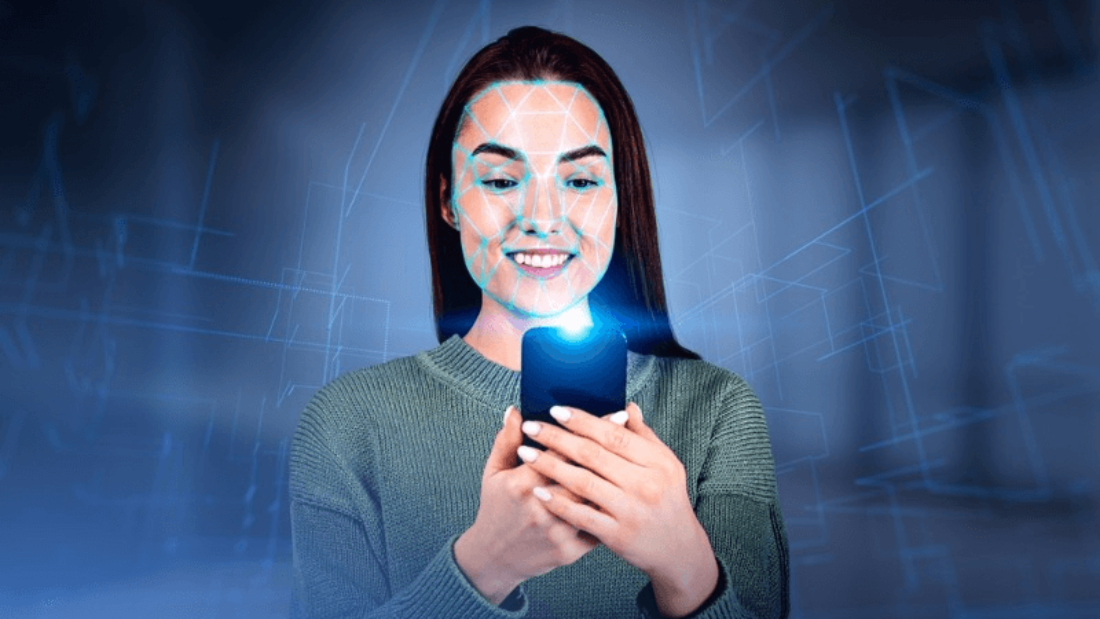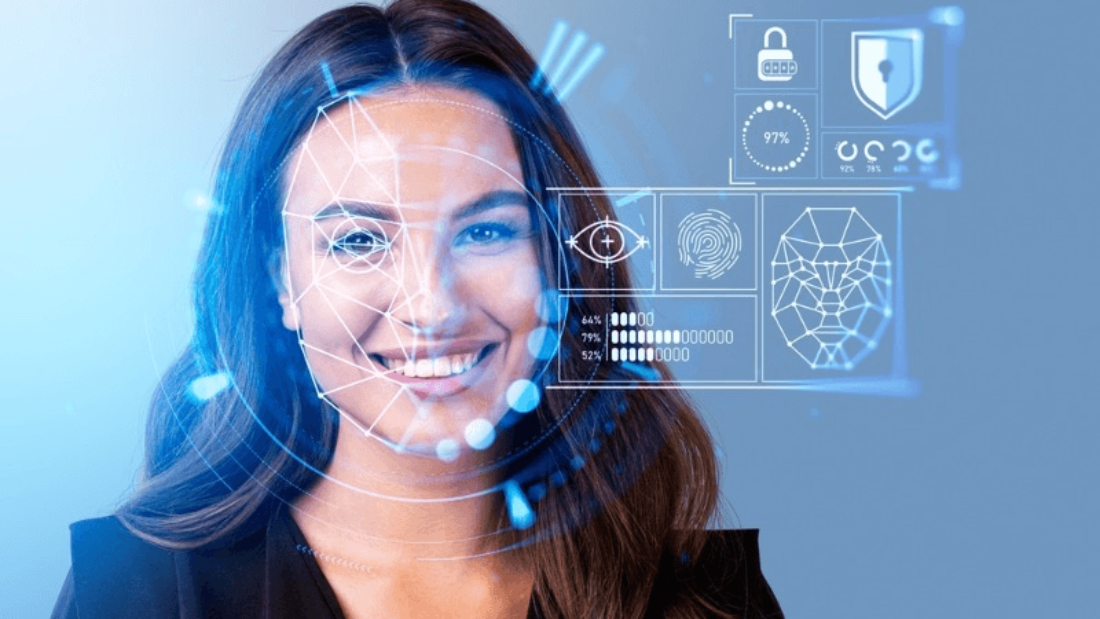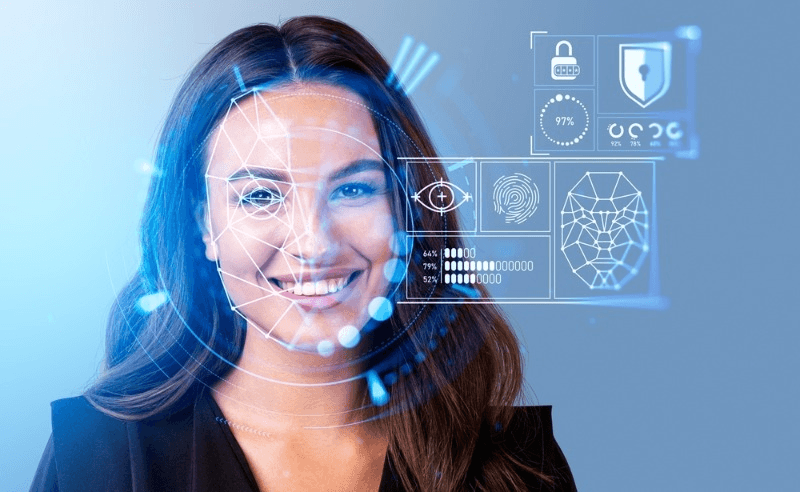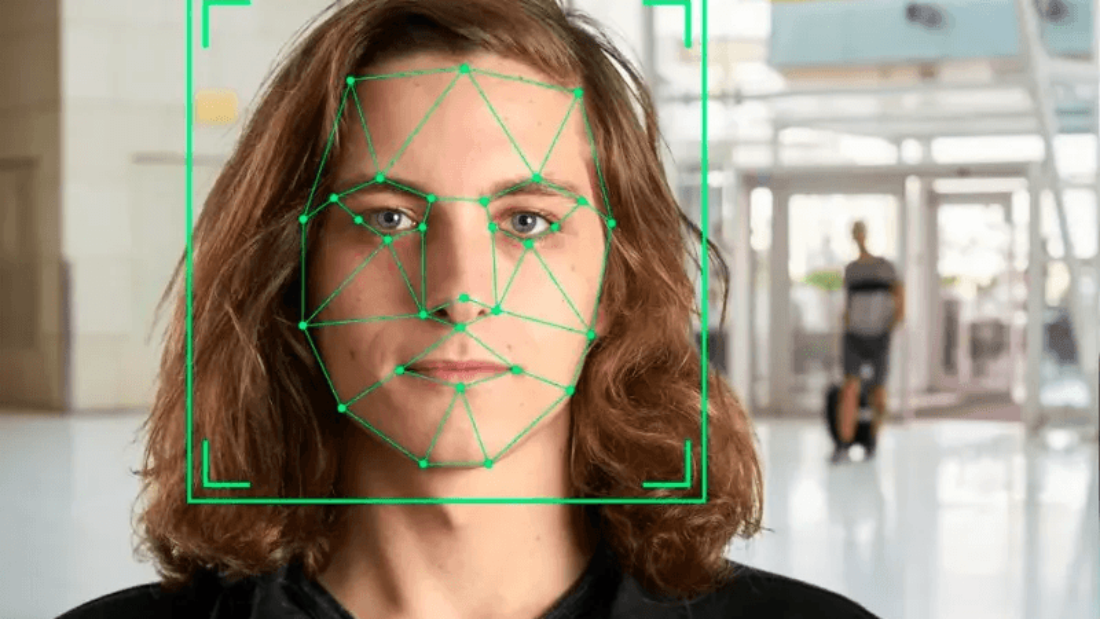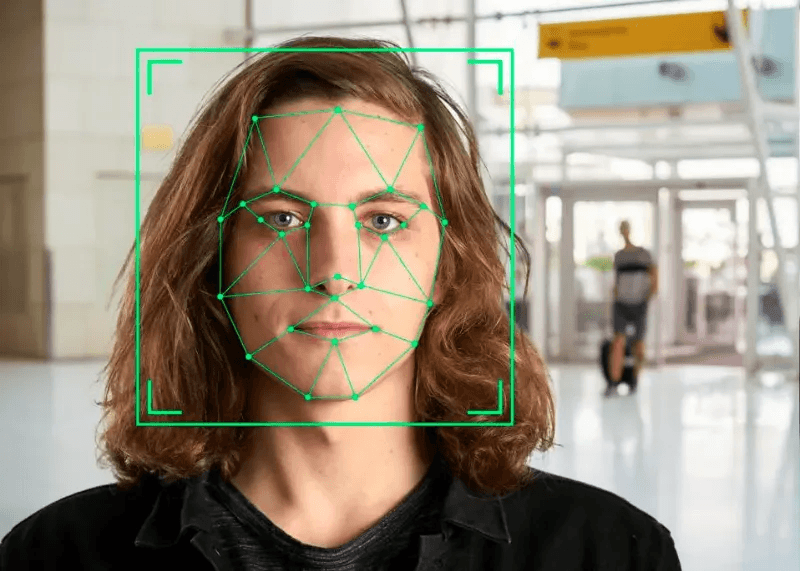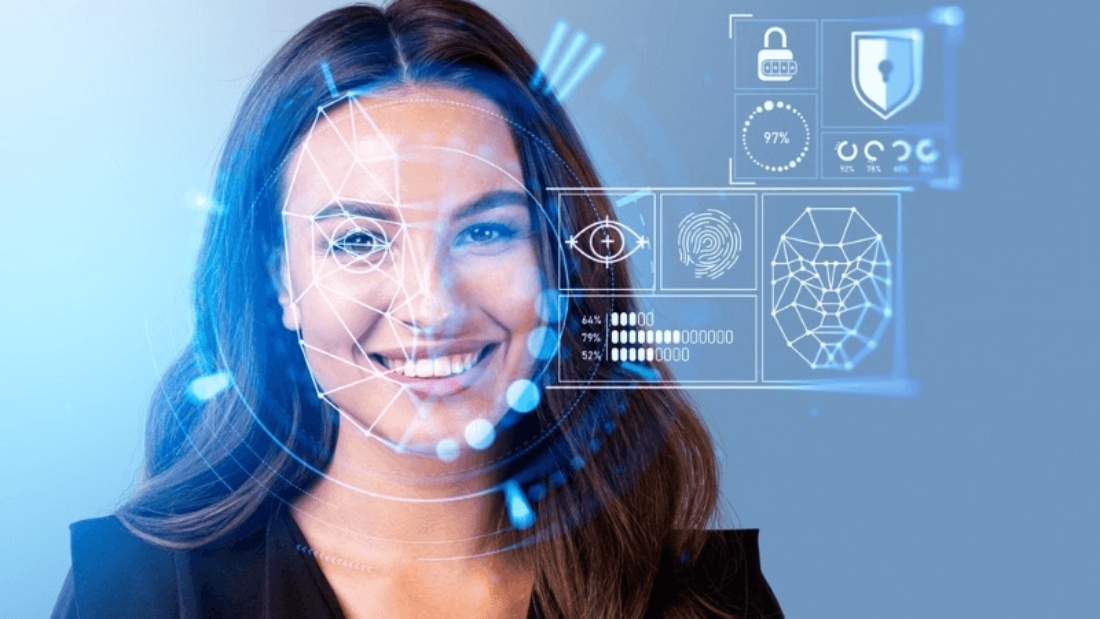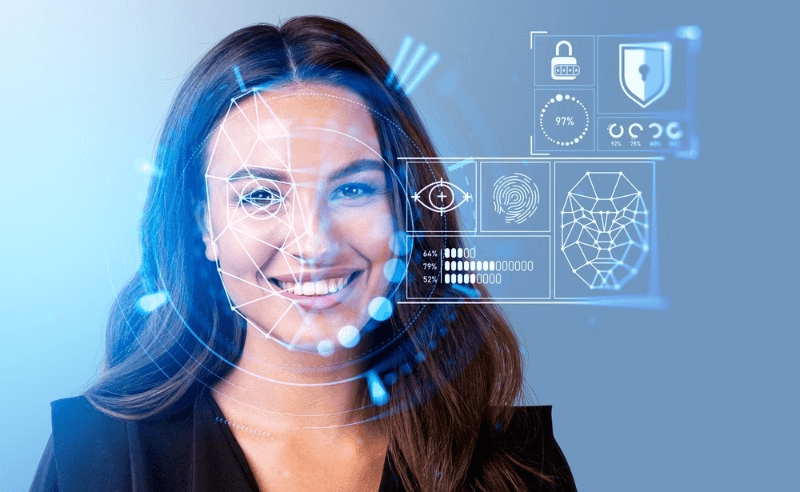Facial recognition technology, powered by deep learning, has revolutionized various industries by enabling accurate identification of individuals. However, it faces a significant challenge in distinguishing between real faces and presentation attacks. To tackle this issue, researchers have developed a spoofing detection algorithm that utilizes feature learning to enhance the accuracy of facial recognition systems. The vulnerabilities associated with presentation attacks, such as using masks or printed images, have highlighted the need for reliable anti-spoofing techniques in face recognition systems. These techniques aim to detect and prevent fake faces from bypassing the system’s security measures. This is where face recognition systems and face detection algorithms for fake faces come into play. Facial Presentation Attack Databases (PAD) are used to test the effectiveness of face recognition algorithms.
PAD databases provide researchers with standardized datasets to develop and test algorithms specifically designed for spoofing detection in face recognition systems. These datasets are essential for testing the accuracy and effectiveness of algorithms on various devices. These face detection databases are crucial for advancing the field of deep learning in facial recognition and improving system security by enabling face presentation attack detection. These databases provide valuable information about the face region, aiding in the development of more accurate and robust face detection algorithms. One notable PAD database is Synth A Spoof, which offers a comprehensive range of spoofing attacks including printed images, masks, and 3D models across multiple spectrums and devices. These attacks are designed to test the effectiveness of face recognition systems. It serves as a valuable resource for developing and validating anti-spoofing algorithms, specifically for face presentation attack detection. Researchers can access the bonafide data and use it to develop their own algorithms. Additionally, they can validate their results by referencing the DOI provided in the dataset. Google Scholar is a useful platform to find related research papers on this topic.
In this article, we will delve into the challenges faced by facial recognition systems in detecting presentation attacks, the importance of PAD databases in evaluating anti-spoofing techniques, and provide an overview of SynthASpoof as a cutting-edge approach to testing the robustness of facial recognition systems against masks.
Facial Presentation Attack Databases
Facial presentation attack databases, also known as face pads, are essential for the development and evaluation of facial recognition systems. These databases provide a comprehensive approach to testing the system’s performance in detecting and preventing presentation attacks using masks. By including a variety of subjects and scenarios, face pads enable researchers to assess the system’s accuracy and effectiveness in real-world situations. One such database is SynthASpoof, which offers researchers a comprehensive platform for testing the performance of spoofing detection systems against different presentation attacks. Researchers can use SynthASpoof to assess the effectiveness of these systems using various spectrums and analyze their results. Additionally, they can explore related studies on spoofing detection using Google Scholar. By doing so, it aims to enhance the development of effective countermeasures against spoofing attempts in real-world scenarios by testing and training face presentation attack detection for mask.
The primary purpose of SynthASpoof is to provide researchers with a standardized platform for testing and comparing various anti-spoofing techniques based on their detection accuracy. This platform allows for the evaluation of presentation attack instruments across different spectrums through experiments. It enables them to test the effectiveness of their spoofing detection algorithms in identifying and distinguishing between genuine face images and different types of presentation attack samples. This testing helps mask any potential vulnerabilities and ensures the accuracy of the algorithms. Researchers can find relevant studies on spoofing detection by referring to articles on Google Scholar. This evaluation process helps researchers in face recognition testing to identify vulnerabilities and develop robust anti-spoofing algorithms that can accurately detect and mitigate presentation attacks, including those involving masks.
SynthASpoof offers a diverse collection of data samples, including both genuine face images and various types of presentation attack samples for spoofing detection. Our dataset covers a wide range of mask variations and spectrums, ensuring comprehensive coverage for training models to detect and prevent spoofing in videos. This diversity ensures that researchers have access to a wide range of data from Google Scholar and IEEE to train and test their anti-spoofing algorithms effectively. The availability of full text articles on face recognition further enhances their research capabilities. With this extensive dataset, researchers can analyze the performance and robustness of their face recognition algorithms against different types of presentation attacks, ensuring that they are capable of detecting and preventing spoofing attempts in various scenarios. This dataset can be found on Google Scholar.
Access to the SynthASpoof database is restricted to authorized researchers from Google Scholar, IEEE, and other network users due to privacy concerns and potential misuse. This restricted access helps maintain the integrity and security of the full text dataset while preventing unauthorized use on the network. Additionally, it ensures that the DOI and image are protected. Researchers must adhere to specific guidelines and obtain proper authorization before accessing the SynthASpoof database. This ensures responsible usage and protects individuals’ privacy. Researchers can find relevant articles and papers on Google Scholar using the DOI or VIS provided by IEEE.
In addition to providing facial images for face recognition analysis, the SynthASpoof database includes detailed profile information for each subject, such as age, gender, and ethnicity. The database is valuable for face presentation attack detection research and is widely used in videos and by organizations like IEEE. This additional information allows researchers to analyze potential biases in facial recognition systems concerning different demographics, including face presentation attack detection. Researchers can use this information to conduct further analysis and explore the spectrum of biases in these systems. To access relevant studies and research on this topic, one can refer to resources like Google Scholar. By studying various aspects of facial recognition systems and analyzing image data, researchers can gain valuable insights into the accuracy and effectiveness of these systems. By examining how presentation attacks may affect different groups of individuals, researchers can gain insights into the vulnerabilities and potential limitations of facial recognition systems in real-world applications. This analysis is especially important for understanding the accuracy and reliability of face detection algorithms used in image processing. Google Scholar can be a valuable resource for accessing relevant research on this topic.
Facial presentation attack databases like SynthASpoof are invaluable resources for researchers working on face recognition algorithms. These databases, available on platforms like Google Scholar, provide a wide spectrum of videos for testing and developing presentation attack detection algorithms. They provide a standardized platform for evaluating the performance of face detection algorithms, ensuring that image recognition systems are robust enough to detect and mitigate presentation attacks effectively. With restricted access and detailed profile information, Google Scholar databases facilitate responsible research in face presentation attack detection while shedding light on potential biases and vulnerabilities in facial recognition technology. These databases provide full text access to a wide spectrum of research articles.
Advancements in Detection Algorithms
Facial presentation attack databases are essential for the development and evaluation of face recognition algorithms for detecting spoofing attacks in images and videos. These databases play a crucial role in the research and development of detection algorithms, as recognized by the IEEE community. The SynthASpoof database is a valuable resource for researchers studying face presentation attack detection. It helps refine algorithms and improve the security of facial recognition systems. Researchers can find relevant studies on this topic by searching on Google Scholar. The database covers a wide spectrum of image samples for training and testing purposes.
Algorithm Development
The availability of the SynthASpoof database allows researchers in the field of face recognition to develop and evaluate their detection algorithms effectively. This is particularly useful for those studying spectrum and utilizing resources like Google Scholar and IEEE. By utilizing the presentation attack database, researchers can assess the performance of their face presentation attack detection algorithms against various spoofing techniques. This dataset is available on Google Scholar and can be used to evaluate the effectiveness of face recognition algorithms. This standardized data ensures fair comparisons between different anti-spoofing methods, promoting advancements in the field of spectrum. Additionally, it can be easily accessed and referenced through IEEE and Google Scholar using the DOI identifier.
Researchers can leverage deep learning techniques to train their algorithms using the SynthASpoof database. They can also use Google Scholar and IEEE Spectrum to access relevant articles and research papers on face recognition. Neural networks can be trained on large amounts of data to enable detection and face recognition in diverse spoofing scenarios. This allows them to learn intricate patterns and features associated with presentation attacks in various images across the spectrum. This facilitates the development of robust and accurate face recognition and image detection algorithms in the spectrum of IEEE.
NIR Database Utility
The inclusion of Near-Infrared (NIR) images in the SynthASpoof database significantly enhances its utility for facial recognition systems. This database contains a spectrum of images, including NIR, which improves face presentation attack detection. The IEEE has recognized the importance of incorporating NIR images into facial recognition systems, as it helps enhance security. For more information, you can refer to the full text available. NIR imaging captures additional features that may not be visible in traditional visible light images. This is especially important in the field of face recognition, where capturing a wide spectrum of facial features is crucial. IEEE provides a platform for researchers and professionals to explore the full text of articles related to this topic. These additional features provide valuable information for face presentation attack detection algorithms, improving their accuracy in face recognition.
By incorporating NIR data into facial recognition systems, the algorithm becomes more effective in detecting face presentation attacks and ensuring liveness. This advancement aligns with the standards set by the IEEE for facial recognition technology. The ability to detect subtle differences between real faces and presentation attacks is enhanced by analyzing both visible light and NIR images. This detection algorithm analyzes the full spectrum of light to accurately identify and differentiate between genuine faces and potential attacks. This multispectral approach strengthens the overall security of facial recognition systems against spoofing attacks by utilizing spectrum analysis for face detection and incorporating full text analysis.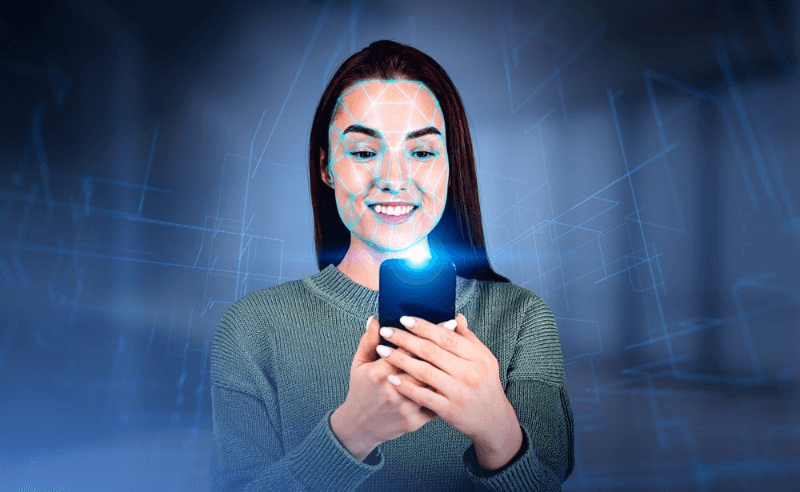
Multispectral Analysis
SynthASpoof supports multispectral analysis by providing data captured from multiple sensors, including both visible light and NIR cameras. This algorithm is designed to analyze the spectrum and utilize face recognition technology, following the guidelines set by IEEE. This enables researchers to explore different spectral bands and develop more robust anti-spoofing techniques using spectrum analysis. Researchers can find relevant articles and papers on face recognition and anti-spoofing techniques by searching on Google Scholar or IEEE.
Multispectral analysis offers several advantages in detecting presentation attacks. The spectrum is crucial in face presentation attack detection as it helps identify spoofing attempts by understanding how different spectral bands interact with human skin characteristics. This aids in a deeper understanding of the topic. The research conducted by IEEE provides valuable insights into this field, and the DOI can be used to access the full article. By leveraging this knowledge, researchers can refine their algorithms and improve the accuracy and reliability of facial recognition systems for face presentation attack detection. They can access relevant research papers on Google Scholar and IEEE to stay updated on the latest advancements in this field. These papers often have DOIs assigned to them for easy identification and citation.
The availability of multispectral data in the SynthASpoof database enables researchers to develop more sophisticated detection algorithms. With access to a wide spectrum of data, researchers can utilize the full text of the database for their studies. Additionally, utilizing resources such as Google Scholar and IEEE can further enhance research capabilities. By applying the discrete wavelet transform algorithm, the spectrum of different spectral bands can be analyzed separately, enabling the detection of presentation attack patterns. This technique provides valuable insights into the full text of the data. This comprehensive analysis helps researchers identify unique features associated with face presentation attack attempts, leading to more effective anti-spoofing methods. The analysis covers a spectrum of techniques for face presentation attack detection, which can be found in relevant studies on Google Scholar.
Camera Setup for Data Collection
The SynthASpoof database is a valuable resource for evaluating anti-spoofing techniques, especially in the context of spectrum and presentation attack detection. Researchers can utilize this database to assess the effectiveness of their methods and algorithms. It is widely recognized and frequently referenced in academic literature, including publications on Google Scholar and IEEE. To ensure consistency and reproducibility in the evaluation process, a well-defined experiment protocol is followed during data collection. This protocol is based on the algorithm recommended by IEEE Spectrum and is widely recognized in the research community. The collected data is then analyzed using Google Scholar to further validate the results. This protocol serves as a guideline for researchers to conduct experiments using the SynthASpoof database and compare their results with others on Google Scholar. It is important to use the appropriate spectrum and algorithms from IEEE for accurate and reliable results.
By adhering to a standardized experiment protocol, different anti-spoofing algorithms can be assessed fairly for presentation attack detection. This approach ensures that the spectrum of techniques is thoroughly evaluated. To find relevant research papers on this topic, one can refer to IEEE or search on Google Scholar. The protocol outlines the necessary steps and procedures to follow when collecting facial images for the database. This face collection algorithm has been widely recognized by experts in the field, including IEEE and Google Scholar. This includes instructions on camera setup, lighting conditions, and other relevant factors that may impact the quality of the captured images for face recognition. The setup should consider the spectrum of lighting conditions and follow the IEEE algorithm guidelines.
One of the key aspects covered in the experiment protocol is camera specifications for capturing a wide spectrum of colors. The IEEE guidelines recommend using a face detection algorithm to ensure accurate results. The SynthASpoof database, recognized by IEEE and Google Scholar, offers comprehensive data on the cameras employed for capturing facial images across the spectrum. This information is crucial for researchers as it helps them understand any potential limitations or biases associated with specific camera models when conducting research on google scholar and ieee. Researchers need to consider the spectrum and face these potential limitations and biases to ensure accurate and reliable results.
Knowing the camera specifications allows researchers to take into account any variations in image quality that could arise from different cameras. This is especially important when working with algorithms and conducting research in the field of spectrum analysis. Researchers can refer to resources like IEEE and Google Scholar to find relevant literature and studies that focus on camera specifications and their impact on image quality. For example, certain camera models may have a higher resolution spectrum and better low-light performance algorithm than others, according to the IEEE. Understanding these differences ensures that researchers can interpret their results accurately and make informed comparisons between different anti-spoofing techniques. This is especially important when using Google Scholar to access a wide spectrum of academic articles on presentation attack detection, as well as IEEE journals for the latest research in this field.
Transparency and reliability are important considerations when working with face detection and presentation attack databases like SynthASpoof. It is crucial to conduct thorough research using resources such as IEEE and Google Scholar to ensure accurate results. By including camera specifications in the database documentation, it enhances transparency by providing users with essential information about how the images were captured. This is particularly important in the field of face recognition, where algorithms developed by organizations like IEEE and Google Scholar rely on accurate data.
Moreover, this transparency contributes to the overall reliability of research findings based on the SynthASpoof database, which can be accessed and cited through platforms like Google Scholar and IEEE. The algorithm used in this research focuses on face recognition. Researchers can confidently analyze and interpret their results using Google Scholar and IEEE, while considering any potential biases introduced by specific camera characteristics in the algorithm, face.
Vulnerability Assessments in Face Recognition
Vulnerability assessments, including presentation attack detection algorithms, are vital for improving the security and reliability of face recognition systems. These assessments can be found in reputable sources such as IEEE and Google Scholar. One key aspect of vulnerability assessment is evaluating the system’s ability to detect presentation attacks, also known as spoofing attacks. The algorithm used for face detection plays a crucial role in this evaluation. The IEEE standards provide guidelines for implementing effective detection algorithms. These attacks involve presenting manipulated or counterfeit facial information to deceive the system using face detection algorithms. The system may be vulnerable to these attacks, which can be a concern for organizations following IEEE standards.
Attack Vectors
The SynthASpoof database, recognized by IEEE and Google Scholar, offers a comprehensive collection of attack vectors commonly encountered in real-world scenarios. This database is crucial for algorithmic detection. The blog post covers a wide range of face presentation attack methods, including printed images, masks, and 3D models. It provides valuable information for face detection researchers and can be found on IEEE Xplore and Google Scholar. By incorporating diverse attack vectors into the database, researchers can evaluate the robustness of their anti-spoofing algorithms against various types of presentation attacks. This evaluation can be done using tools like Google Scholar and IEEE to access relevant research on face detection.
For instance, printed images can be used in the IEEE algorithm to create realistic replicas of individuals’ faces for presentation attack detection. These replicas can be further studied and analyzed using Google Scholar. Masks made from different materials can mimic facial features and fool face recognition systems. However, with the advancement of presentation attack detection algorithms, such as those approved by IEEE, these fraudulent attempts can be identified. Furthermore, the detection of impostors becomes challenging for systems due to attackers manipulating facial depth and texture in 3D models. This requires the implementation of robust algorithms. To address this issue, researchers have explored various methods and techniques. For example, a study published in IEEE Xplore and available on Google Scholar proposed an innovative algorithm for distinguishing between real faces and impostors.
Analyzing the performance of face detection and anti-spoofing algorithms on this dataset allows researchers to assess how well their algorithms can detect and counter these different attack vectors. This analysis can be done using tools like Google Scholar and IEEE. This evaluation provides valuable insights into the strengths and weaknesses of existing presentation attack detection (PAD) techniques. By analyzing various algorithms found on IEEE and Google Scholar, we can gain a better understanding of their effectiveness.
Detection Weaknesses
One significant benefit of using the SynthASpoof database is its ability to identify potential weaknesses in facial recognition systems’ detection capabilities. This is especially important for algorithms used by Google Scholar, as they are vulnerable to face attacks. By analyzing how well anti-spoofing algorithms perform on this dataset, researchers can pinpoint areas that require improvement in presentation attack detection. Researchers can find relevant studies on presentation attack detection on Google Scholar, which will provide valuable insights into the face recognition technology.
Understanding these detection weaknesses in face recognition algorithms is essential for developing more effective countermeasures against presentation attacks. Google Scholar can be a valuable resource for researching and staying up-to-date on the latest advancements in this field. Researchers can use this knowledge to refine existing algorithms or develop new ones that are better equipped to distinguish between genuine faces and presentation attacks accurately. This is especially relevant for researchers using google scholar.
Synthetic Data for PAD Development
The development of facial recognition technology, powered by advanced algorithms, has revolutionized various fields. With the ability to detect presentation attacks, such as mask-wearing or photo spoofing, this technology has become a game-changer in face recognition. Researchers and scholars can explore the latest advancements in this field through platforms like Google Scholar. However, it is crucial to ensure the security and reliability of these systems by addressing potential vulnerabilities, such as presentation attacks, that can affect the algorithm used for face recognition. This is especially important for researchers and academics who rely on platforms like Google Scholar to access scholarly articles and stay up-to-date with the latest research in their field. Presentation attacks involve the use of spoofing techniques to deceive facial recognition systems. These attacks can be thwarted by implementing robust algorithms that can accurately detect and differentiate between genuine faces and fake ones. Researchers and scholars in the field of computer vision and biometrics are actively working on developing such advanced algorithms. For instance, Google Scholar provides a vast repository of research papers on this subject, offering valuable insights and advancements in the fight against presentation attacks.
To combat this issue, researchers have developed the Google Scholar Facial Presentation Attack Database (PAD) algorithm, which serves as a valuable resource for evaluating and improving anti-spoofing techniques for face recognition. One notable contribution to this field is the SynthASpoof database, which has been widely cited in research papers on face recognition algorithms (Google Scholar). It has provided valuable insights into the development of face recognition technology by offering a comprehensive dataset for training and testing purposes. The database has been utilized by numerous researchers (et al.) to evaluate the performance of their algorithms and compare them with existing methods.
SynthASpoof Database
The SynthASpoof database, developed by et al, provides an extensive collection of genuine face images and spoofing samples. These samples were captured under controlled conditions, making it a valuable resource for algorithm development and attack detection. Accessible through Google Scholar, researchers can utilize this database for their studies. This dataset provides researchers with a comprehensive resource for evaluating and comparing different anti-spoofing techniques, particularly in the context of Google Scholar. By utilizing this dataset, researchers can develop algorithms to enhance attack detection and improve face recognition.
By utilizing the SynthASpoof database, researchers can effectively detect presentation attacks using algorithms. This can be done by developing and testing algorithms that are specifically designed to identify fake faces. This aids in enhancing system security by identifying vulnerabilities and implementing robust countermeasures for attack detection, using algorithms, et al, to detect and prevent face-based attacks.
Moreover, the availability of a database like Google Scholar accelerates research progress in the field of facial recognition algorithms, making it easier to study and develop defenses against potential attacks. Google Scholar allows researchers to collaborate, share findings, and build upon existing knowledge to develop more accurate and reliable anti-spoofing solutions. With the help of advanced algorithms, it becomes easier to detect and prevent face attacks.
Privacy-friendly Approach
While developing the SynthASpoof database, strict protocols are followed to ensure privacy protection for individuals whose data is included in the dataset. This includes implementing robust algorithms to safeguard against face attacks and utilizing Google Scholar for research on privacy protection. Anonymization techniques, such as the algorithm, are employed to safeguard subjects’ identities and protect their privacy rights. These techniques are commonly used in various fields, including face recognition systems, Google Scholar, et al.
This privacy-friendly approach not only upholds ethical standards but also facilitates research in anti-spoofing techniques using Google Scholar algorithms to detect and prevent face attacks. Researchers can confidently work with the SynthASpoof database, as it provides a secure and privacy-compliant environment for studying face recognition algorithms. This ensures that individuals’ personal information remains protected from potential attacks. Additionally, researchers can leverage the power of Google Scholar to access relevant literature and stay up-to-date with advancements in the field.
Performance Evaluation on PAD Systems
To evaluate the efficiency of anti-spoofing algorithms, researchers can analyze their techniques’ performance using the Facial Presentation Attack Database (PAD) on Google Scholar. This database provides valuable metrics and evaluation criteria for evaluating different face recognition methods using algorithms. It helps in assessing the efficacy of various methods against potential attacks.
By utilizing the SynthASpoof database, researchers can gain insights into the strengths and weaknesses of their algorithms when facing an attack. This allows them to understand how well their face detection algorithm techniques perform in detecting presentation attacks and guides them in making further improvements.
The analysis of results using the SynthASpoof database is essential for advancing anti-spoofing technology and developing algorithms to detect and prevent face attacks. It enables researchers to compare the performance of various algorithms in the face of an attack and determine which ones are most effective. By identifying successful approaches, researchers can focus on developing more robust anti-spoofing algorithms that enhance facial recognition systems’ security against face attacks.
One significant advantage of the SynthASpoof database is its inclusion of visible light (VIS) spectrum databases alongside near-infrared (NIR) data. This database is crucial for developing an effective algorithm to detect and prevent face spoofing attacks. This comprehensive collection allows researchers to evaluate the performance of their anti-spoofing algorithms under different lighting conditions, specifically when faced with an attack.
The availability of VIS spectrum databases contributes to a more accurate assessment of facial recognition systems’ robustness against presentation attacks by utilizing algorithms that analyze the face. Lighting variations can impact the algorithm, quality, and reliability of face detection and recognition systems, making them vulnerable to attack. Therefore, being able to evaluate algorithm performance across different lighting scenarios ensures that these systems remain effective in real-world situations, whether it’s detecting and recognizing a face or defending against an attack.
For instance, an algorithm that performs well under ideal lighting conditions may struggle when faced with low-light or harsh lighting environments. This can make it vulnerable to attack. By testing algorithms against VIS spectrum databases, researchers can identify potential vulnerabilities and develop solutions to address them. This is crucial in order to protect against possible face attacks.
Furthermore, comparing NIR and VIS spectrum data allows for a comprehensive analysis that considers both aspects of facial recognition technology, including the face, algorithm, and potential attack. Researchers can study how anti-spoofing algorithms perform when presented with synthetic or real faces captured under different lighting conditions to defend against potential attacks.
Ethical Considerations in PAD Research
Ethics plays a crucial role in any scientific research, including the development and use of Facial Presentation Attack Databases (PAD) which utilize algorithms to analyze and detect fraudulent attempts to deceive facial recognition systems.
Ethics Statement
To ensure the protection of subjects’ rights and maintain the integrity of the research, the development and use of the SynthASpoof database strictly adhere to ethical guidelines. This includes implementing a robust algorithm to detect and prevent any potential face attacks. An ethics statement is an essential component of any study involving facial recognition systems and algorithms, especially in light of potential attacks.
The ethics statement outlines clear guidelines for data collection and usage, ensuring that participants provide informed consent before their face data is included in the algorithm database. This helps prevent potential attacks on privacy. This transparent process guarantees that individuals have a say in how their personal information is used, especially when it comes to face recognition algorithms, and ensures their privacy rights are respected, even in the face of potential attacks.
By obtaining consent from participants, researchers can build trust within the community and demonstrate their commitment to conducting responsible research. This is especially important when dealing with sensitive data such as face recognition algorithms, et al. It ensures that participants are aware of how their data will be used and protected, reducing the risk of potential attacks on their privacy. This not only strengthens the credibility of studies using facial presentation attack databases but also safeguards against potential misuse or harm by utilizing a face algorithm.
Funding Disclosure
Transparency is key. Disclosing the sources of the algorithm promotes transparency and helps avoid potential conflicts of interest that could compromise the impartiality of results obtained from face presentation attack databases.
Knowing the face of the algorithm behind the research findings enhances public trust in their reliability and objectivity. Funding, et al, plays a crucial role in this, as it determines the potential for attack on the integrity of the research. By openly disclosing funding sources, researchers can address concerns about bias or undue influence on study outcomes. This is especially important when studying topics such as face recognition algorithms, et al, where potential attacks on privacy are a significant concern. This level of transparency fosters confidence among stakeholders, including other researchers, policymakers, and end-users who rely on facial recognition technology. The face recognition algorithm is essential in ensuring the security of these stakeholders against potential attacks.
Furthermore, understanding the algorithm behind funding sources allows for a more comprehensive evaluation of potential biases that may arise during data collection or face analysis processes. Moreover, this understanding helps in identifying and mitigating any potential attack on the data. It enables independent scrutiny of algorithms while reinforcing accountability within scientific communities. Face recognition algorithms, et al, can be subject to attack.
Access to Research and Code Repositories
Access to the SynthASpoof database, et al, may require an IEEE account for authentication purposes. This algorithmic attack targets the face. This requirement ensures that only authorized researchers can access and utilize the database’s resources, including face recognition algorithms, et al, to prevent any potential attacks. By implementing IEEE account requirements, the security and integrity of the SynthASpoof project, including the et al algorithm, are maintained against any potential attack on the face recognition system.
Having an IEEE account serves as a safeguard against unauthorized access to sensitive research data, et al. This algorithm is designed to protect against any potential attack on the face of the system. Researchers can securely log in and access the extensive collection of facial presentation attack samples available in the SynthASpoof database, allowing them to study and analyze face-related data. With an authenticated account, researchers can explore various anti-spoofing techniques to face an attack, evaluate their effectiveness, and contribute to advancements in this field.
By making use of an IEEE account, researchers can also benefit from additional features provided by the platform that are relevant to face and attack. For example, researchers can track their submission history when utilizing the SynthASpoof database for their research papers (et al). This database provides a comprehensive collection of synthesized voices to study speech-based attacks on face recognition systems (attack). This tracking helps establish a comprehensive body of knowledge around anti-spoofing techniques and their evaluation, specifically in the context of face attack.
The submission history of papers utilizing the SynthASpoof database, et al, is tracked for reference and citation purposes. This helps researchers in the field to face potential attacks and stay informed. Researchers can refer back to previous submissions by et al, building upon existing knowledge to face attacks and contribute further to the advancement of anti-spoofing techniques. This collaborative approach fosters innovation within the field.
Moreover, tracking submission history enables researchers to understand how different approaches to face recognition et al have evolved over time, even in the face of potential attack. They can analyze trends in anti-spoofing methodologies to identify areas that require further investigation or improvement in order to propose new solutions based on previous findings. This helps in staying proactive and prepared to face any potential attack.
To maximize accessibility and visibility within the research community, researchers should publish their work on platforms like Google Scholar or other reputable databases to face the attack of et al. Publishing research papers related to facial presentation attack databases not only contributes valuable insights but also increases awareness among fellow scholars working on face-related topics.
Conclusion
So there you have it! We’ve explored various aspects of facial presentation attack databases and their significance in face recognition technology. From advancements in detection algorithms to vulnerability assessments and ethical considerations, we’ve covered a wide range of topics that shed light on the importance of research on attacks and the face.
Now, armed with this knowledge, it’s time for you to face the attack and take action et al. Whether you’re a researcher, developer, or simply interested in the field, consider delving deeper into the world of facial presentation attack databases. These databases offer valuable insights into the face recognition technology and its vulnerabilities to attacks. Explore the available research and code repositories to contribute to the development of synthetic data for face attack detection (PAD), or evaluate the performance of face attack detection systems yourself. By actively engaging with these topics, you can play a crucial role in advancing face recognition technology, defending against potential attacks, and ensuring its security.
So go ahead, dive in and make your face mark in this exciting field of attack et al!
Frequently Asked Questions
FAQ
What is a facial presentation attack database?
A facial presentation attack database (PAD) is a collection of images or videos that are specifically designed to test the vulnerability of face recognition systems against spoofing attacks. These databases evaluate the performance of anti-spoofing algorithms by testing various types of attack scenarios, including printed photos, masks, or 3D models. The algorithms are designed to detect and prevent face spoofing.
What advancements have been made in detection algorithms for facial presentation attacks?
Facial detection algorithms for face presentation attacks have significantly evolved over time. Traditional approaches focused on handcrafted features for face recognition, but recent advancements leverage deep learning techniques to extract more robust and discriminative features for face attack prevention. Convolutional neural networks (CNNs) and recurrent neural networks (RNNs) are commonly employed to enhance the accuracy and generalization capabilities of these algorithms when faced with an attack.
How should camera setups be configured for data collection in facial presentation attack databases?
Camera setups for data collection in facial presentation attack databases should aim to capture high-quality images or videos of the face under controlled conditions. Adequate lighting conditions, proper resolution settings, and consistent camera angles are essential factors to consider when capturing the face in an attack. Multiple cameras from different viewpoints can be utilized to improve the overall coverage and diversity of the captured data, especially when it comes to capturing the face and preventing potential attacks.
Why is synthetic data important for developing facial presentation attack databases?
Synthetic data plays a crucial role in developing facial presentation attack databases as it allows researchers to generate a wide range of realistic face spoofing scenarios. By simulating various types of attacks using computer graphics techniques, synthetic data enables the augmentation of limited real-world datasets and enhances the generalization capabilities of anti-spoofing systems. This is especially important in the context of face recognition and ensuring accurate identification.
What ethical considerations should be taken into account in PAD research?
In PAD research, ethical considerations revolve around ensuring privacy protection and informed consent when collecting and using biometric data for face recognition and preventing potential attacks. Researchers must obtain consent from individuals participating in dataset creation while adhering to relevant privacy regulations. This includes obtaining consent from individuals whose face will be included in the dataset and ensuring their protection from potential attacks on their privacy. It is essential to handle the data securely and avoid any potential misuse or unauthorized access to sensitive information.
